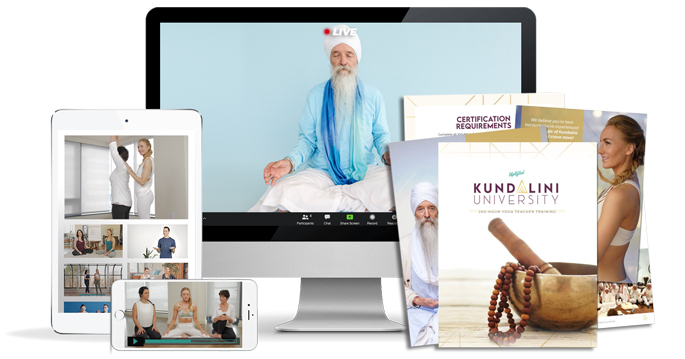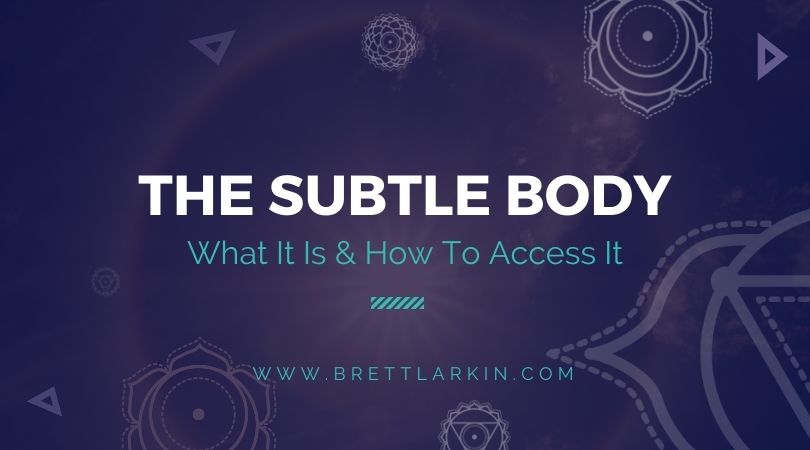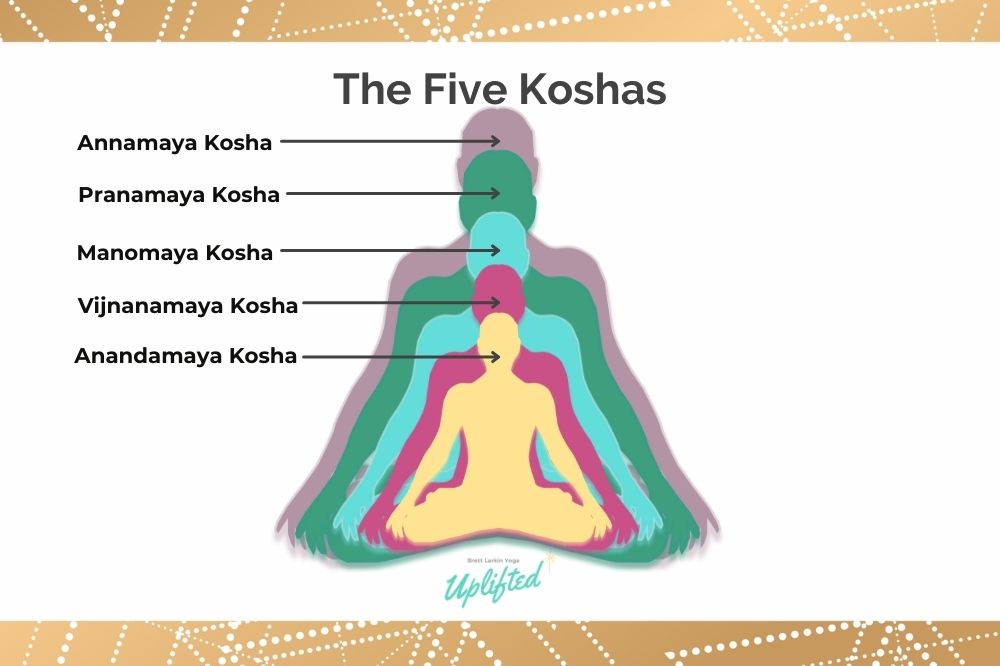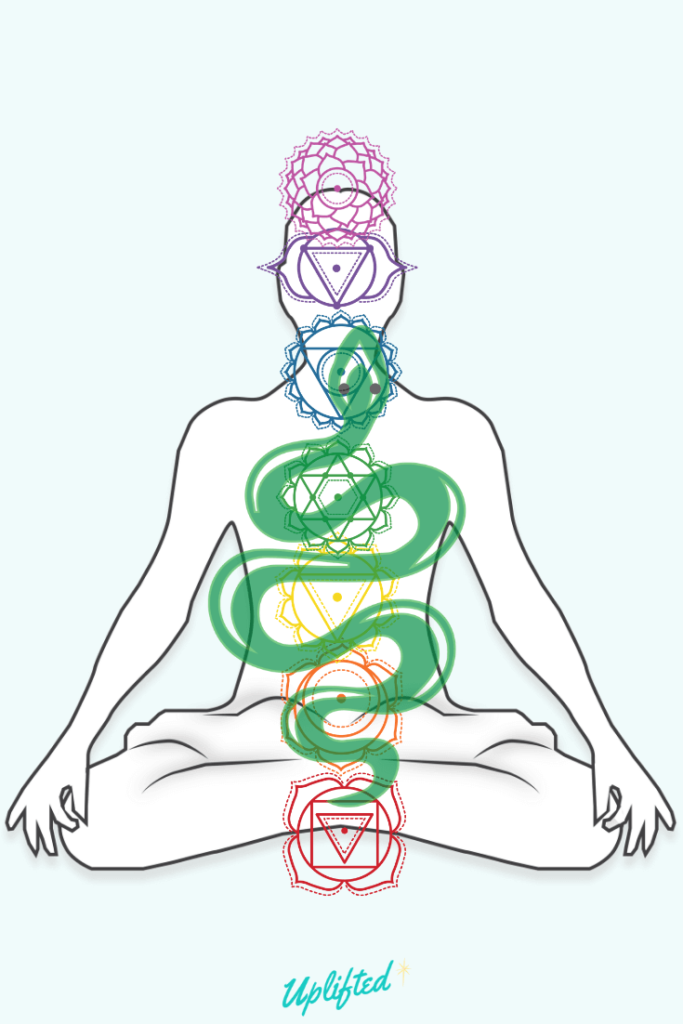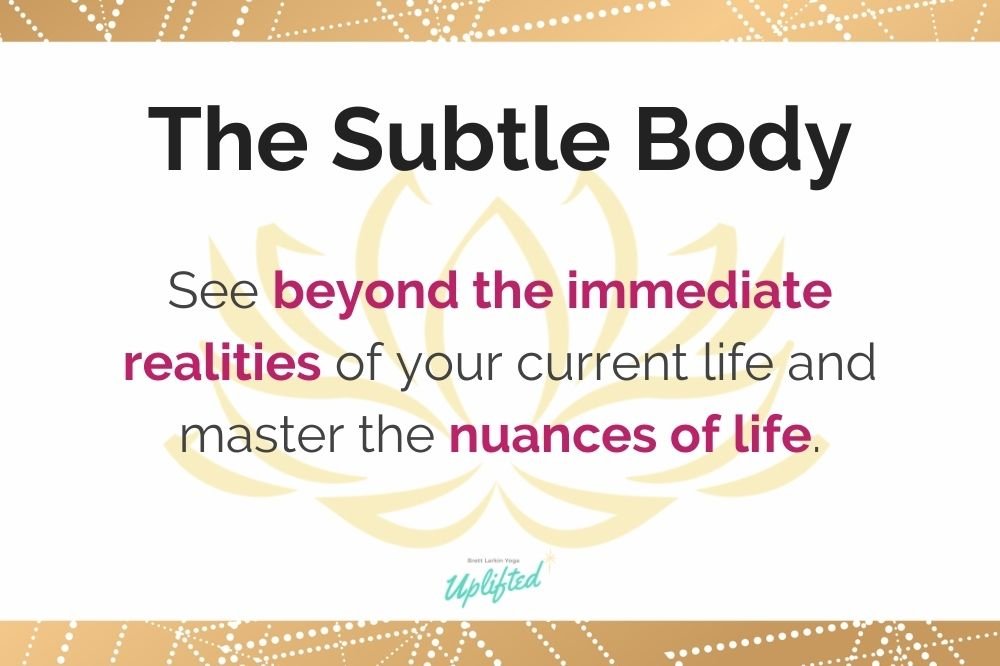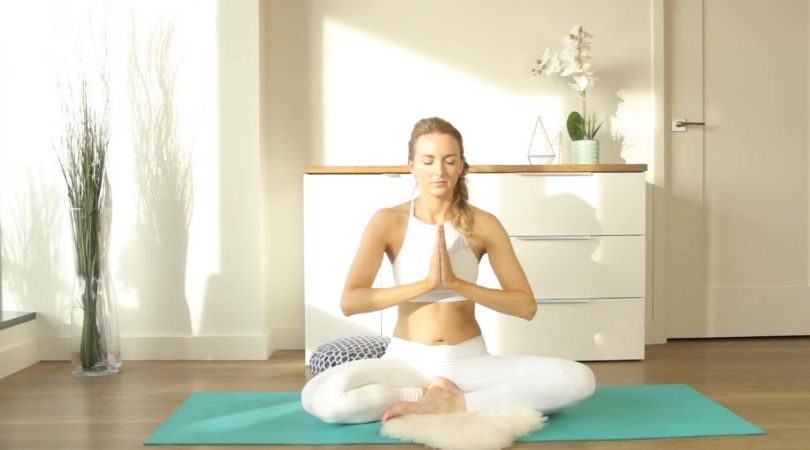NEWS FLASH: Western society doesn’t exactly value “the subtle”.
You’ve been taught that hard work is the key to success, wealth can buy you fame, sickness should be cured with drugs, and happiness is driven by self-esteem and positivity.
You know it, too! What’s the go-to sarcastic reply to something outrageously obvious?
🙄 “Wow. Subtle.”
This may be the reason that the subtle body is the second-most widely taught concept of the 10 body philosophy in Kundalini yoga (the first is the physical body, because it is the easiest to connect to of course).
Yogis often sense the importance of the subtle – the things that can’t be seen, but can be sensed – when deepening a physical practice. Sometimes along this path of awareness, it becomes clear that you’re something more than just a human being with a physical body.
You might wonder, what exactly am I? By gaining a deeper understanding of the subtle body and how to access it, you become a better yogi and teacher. You gain access to your essential nature, separate from the material world, and the stores of powerful energy contained within your being.
What is The Subtle Body in Kundalini Yoga?
The subtle body system represents your energetic and intuitive experience of reality. It’s often used as an umbrella term for the various homes and movement of prana (or life force) through the body.
In the subtle body, there are thousands of nadis, or energetic channels, through which your prana flows. As one of the highest bodies in the ten-body system, the subtle body requires a more dedicated spiritual and intuitive practice to access than some of the lower bodies do, like the neutral mind.
Origins of The Subtle Body In Yoga
🤓 History lesson! According to Vedic texts there are three “bodies”. Those three bodies include: Sthula Sharira, the gross body, Sukshma Sharira, the subtle body/astral body, and Karana Sharira the causal body.
Going even deeper, the use of the words “subtle body” extend back to the Upanishads, yogic texts written in the fourth and fifth centuries. The Upanishads discuss five coexisting bodies that we now refer to as the koshas. These are coexisting layers that exist simultaneously within our being, and they formed the basis for the 10 bodies theory that Yogi Bhajan later brought to the US in the 1970s.
When discussing the Five Koshas (kosha meaning covering or sheath) you’ll notice each one ends with “maya”. This translates to “illusion” but can be broken into two words “ma” and “ya”. “Ya” = the measure of and “ma” = mother/creation.
It’s basically a measurement of the life experience, which some argue is all an illusion 🤯. The five koshas are as follows:
- Annamaya Kosha (the physical layer): “ana” = the smallest unit, but it is sometimes translated as “anu” which means food. So this is often called the food body. So, the smallest bits that make up you. You know that saying, “you are what you eat”? It’s kind of true, the small bits of what you eat turn into the energy and cells that make up your physical body.
- Pranamaya Kosha (the vital energy layer): “prana” = that which animates. I like to say that which animates the meat suit. This kosha encompasses what lies underneath the physical body. This is your life force energy.
- Manomaya Kosha (the mental layer): “man” = mind. This kosha includes the mind, the emotions, and your central nervous system function. It’s everything coming in through your sense organs, (those five organs are: ears, eyes, nose, tongue, skin). Vritti(mind chatter) lives here, and so does your individuation or your sense of identity or ego. From there the concept of budhi straddles between this kosha and the next. It is the part of you that is just knowledge or understanding. It’s that feeling of no doubt. That “gut feeling”.
- Vijnanamaya Kosha (the wisdom layer): This is beyond intellect, it is innate intelligence. It’s the communication between your cells to bring your system back to homeostasis.
- Anandamaya Kosha (the bliss layer): “ananda” means bliss, making this the bliss body, and the most subtle measure of the mother. It unveils the causal body. It is the seed of undifferentiated consciousness/awareness that lives within us.
As you develop your subtle body, these five koshas progress you from the Earth-bound physical body and bring you more towards your true nature. Yoga classes mostly work with the first three koshas as a way to reverse engineer the system. Using asana, meditation, and pranayama in order to connect with your innate wisdom and the bliss state.
The Subtle Body & The Chakra System
My favorite way to connect with the subtle body? Definitely through a practice that aligns with the chakra system.
Within Sushumna Nadi (the energetic central-axis in your body), you have seven energy centers – known widely as the seven chakras!
Each of the chakras gives a different lens through which to view the subtle body. You might know the heart chakra as the love chakra, or the crown chakra and your gateway to the divine.
In this regard, it’s helpful, as teachers and spiritual seekers, to have “steps” to evolutionary consciousness. If you’re very new to the subtle body and it all seems a bit overwhelming, don’t worry!! The chakras will help you open a whole new dimension to your yoga practice. I walk you through it in this 7-day chakra program that will boost your confidence on and off the mat.
Characteristics of The Subtle Body
Affirmation: I am an energetically intuitive being. I am connected to the infinite nature of reality.
Qualities: The qualities of the subtle body are deeply connected to our more intuitive and spiritual nature. These include:
- A general sense of calm
- Deep connection with intuition
- Insightfulness
- The ability to foresee long term consequences of events
- Connection to the Akashic records
Your subtle body is basically your energetic anatomy. Those who are deeply connected with their ninth bodies often come across as deeply intuitive. They are able to remain subtle and calm, even in difficult circumstances, and are not reactive, but steady, thoughtful, and expansive.
Those who are deeply connected to their subtle body energies want to see the bigger picture. They also have a deep understanding that everything is connected, and can move beyond the limited perception of separation – into the divine truth of unification.
Balancing Your Subtle Body (Ninth Body)
If you want to live a more mindful and joyous life, check your ninth body! Yoga teachers will find that balancing their own subtle bodies will have a powerful ripple effect on the progress and capacity of their students.
Signs of Balance: Those with a balanced ninth body will be able to maintain balance and calm. Here are some other strong indicators of balance in the Subtle Body.
- The ability to see your true Self clearly and project it
- The ability to clearly communicate insights
- Feeling a sense of purpose and connection with the universe
Symptoms of Imbalance: Sensing an imbalance in the subtle body can be difficult for anyone new to the ten bodies philosophy. After all, an imbalance in the subtle body doesn’t show up in the physical body (although it can influence how you feel in your body). Here are some indicators of a potential imbalance in the subtle body:
- Being easily misled or overly naive
- Feelings of restlessness
- Feeling misunderstood and often frustrated
- The inability to balance your own thoughts & emotions with those of others
How to Access the Subtle Body
Dedicate 1,000 Days To Practice
Pick any meditation and kriya, and do it every day for 1,000 days.
If this seems intimidating, that’s kind of the point! This is the most traditional “prescription” for an imbalance in the subtle body. Keeping a dedicated practice for a prolonged period of time is a great indicator of personal dedication – tapas, according to the niyamas. The driving force behind this practice is to shift your perception of the mystery of consciousness towards mastery of the practices of consciousness.
If you’re like, “wow – that’s almost 3 years of daily practice!” You’d be right 😊. If that’s way beyond your current practice routine, start with five minutes of silent meditation every day. You’ll probably find that the more you practice, the longer you’re inclined to sit and meditate. As you do, take time to notice any changes you see in your mental health or your abilities to cope with stressful situations.
Take note of how your awareness shifts and your senses seem to heighten. You might also notice life will flow a lot easier 😉.
Wahe Guru Kriya
According to Kundalini tradition, this practice strengthens and tones your nervous system. This helps you to move into a space of nonattachment and ease that is pertinent for the ninth body. The next time you have a big decision to make, try this practice for a few minutes to regulate your subtle body beforehand.
- Take a seat on the floor with an upright spine and close your eyes.
- Start with your hands resting on your knees, bring the tips of your thumb and index finger to touch.
- Flip your palms up and extend the rest of your fingers straight.
- Take your inhale in 10 equal parts or ‘sniffs.’
- As you inhale, release the mudra and move your hands in 10 short, sharp movements towards your forehead with each segment of the inhale.
- At the top of your inhale, cover your eyebrows with your palms.
- Then, with one long, smooth exhale, slowly bring your fingertips together like a teepee, keeping the palms separated.
- Bring your hands down the center line slowly as you exhale.
Kundalini Pranayama Breath Series for Glandular Balance
This practice is perfect training your ability to see beyond the illusion of reality; a key capability of the well-tuned subtle body. This is how to do it:
- Begin in a seated position.
- Inhale in 16 short sniffs, pulling your belly button in towards your spine with each one.
- As you sniff, repeat the mantra “Sat Nam” in your mind.
- Exhale in 16 parts, again vibrating Sat Nam in your mind.
- Do this for 5 minutes.
- After you’re finished, come to rest on the back and stretch your arms out long above you.
- Inhale slowly as you raise your legs up about six inches above the ground. As you exhale, release your legs and bring your chin in towards your chest. Continue this for three minutes.
- Rest in savasana for two minutes.
- Return to your seat. Fold your arms across your chest and take hold of your opposite elbows.
- As you exhale, bend forward slowly and bring your forehead to the ground. Inhale to come up slowly. Continue this for 3 minutes.
Final Thoughts
The three bodies, the koshas, the vayus, the ten body system of kundalini yoga, and the chakras are all different ways to look at the subtle body model. Each is a teaching in its own right and each is valid. They may not all align perfectly and you don’t have to work with them all. Choose what calls to you, what feels aligned and sounds true to you. Use it to improve your subtle body awareness and overall well being so that you can bring the physical and subtle bodies into balance. Thus meeting at the causal body, the spirit.
If you want to know more about the subtle body, then you’ll love my 300-hr Yoga Teacher Training. There is an entire module dedicated to it!
Next Steps
- Love Kundalini? Refine your tune in (the Adi Mantra) with me in this free chanting masterclass.
- Experience my Kundalini Dance Party and elevate your mood in 8 minutes.
- Enroll in my Kundalini Demystified training course. Let’s demystify the “mystery” of this ancient science and INSTANTLY reap the benefits!

Sneak Peak into My 300-Hour YTT - FREE Videos, Info Session, Bonuses!

YOU MIGHT ALSO LIKE
- Trauma-Informed Kundalini Yoga: A Heart-Centered Approach to Healing
- Harnessing the Power of Kundalini Divine Feminine for Transformation
- Kundalini for Feminine Energy: Ignite Your Creative Power and Passion
- Mastering the Sufi Grind: Benefits and Techniques for All Levels
- Kundalini Yoga for Chakras: An Uplifted Guide to Energy Balance
- Discover the Benefits of the Gobinday Mukunday Mantra for Well-Being
- Nabhi Kriya: Ignite Your Inner Fire and Personal Power
- Ek Ong Kar Sat Gur Prasad: Kundalini Mantra For Manifestation
- Tantric Har Chant: How It Fuels Prosperity and Inner Power
- Powerful Mantra for Protection Against Negative Energy and Harm
- The Power of Humee Hum Brahm Hum Mantra for Connection and Healing
- The Sa Re Sa Sa Mantra: Connecting Breath, Light, and Creativity
- What Is The Ajai Alai Mantra In Kundalini Yoga?
- What Is Sat Nam Rasayan? How And When To Practice
- The Meaning Of Ang Sang Wahe Guru Mantra in Kundalini Yoga
Get 3 Free Training Vidoes from our Kundalini University Experience & Certification Program
